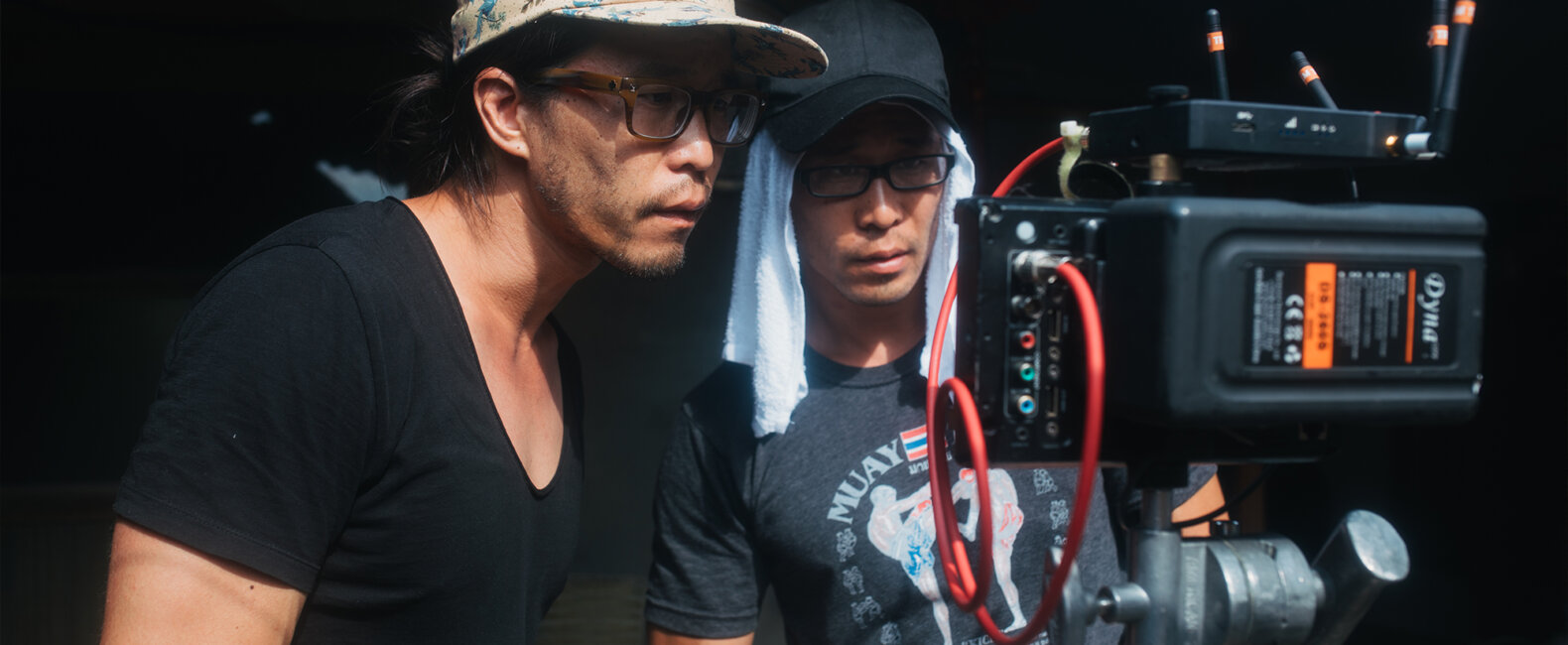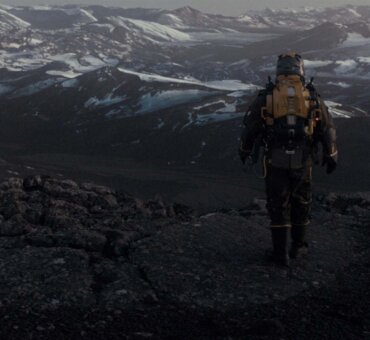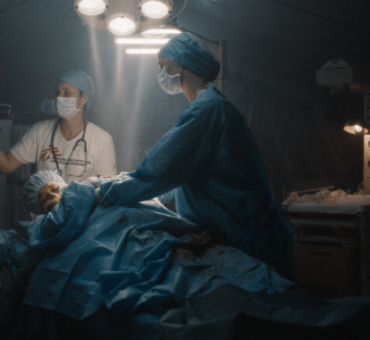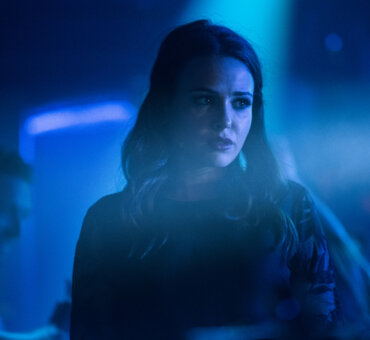What can a film do? A film doesn’t have hands. It lives behind a screen. And from watching the vast majority of Hollywood blockbusters, you might think the only thing films are good for is providing a couple hours of entertainment. But there is a group of filmmakers who believe films can do more than just entertain: they can affect the world.
Enter brothers Winston and Aaron Tao (a.k.a., TwinTaoers), an L.A.-based filmmaking duo whose latest film, Sleep Well, My Baby, is the newest release from Filmsupply Films. The film (created for the nonprofit organization Liberty in North Korea or LiNK) is a fictional story about a very nonfictional situation: women who escape North Korea only to find themselves enslaved in China. It’s a beautiful, heart-wrenching, and, in the end, undeniably affecting film. It does something. And we are proud to put it out into the world.
Watch Sleep Well, My Baby below. Then read our conversation with the Tao brothers about their high-wire balancing act between showing and telling.
Did you guys always plan to approach this project as a fictional narrative?
Winston: Yeah, it was always going to be fictional. Liberty in North Korea had seen another film we’d done called SuperMaarko, which was also a fictional narrative based off true stories. They came to us wanting to do something similar. They believed using a dramatic narrative would be a good way to reach a new audience they hadn’t reached with their previous documentaries.
Why fiction?
Aaron: In our experience, to find a 100% true story that has all the elements of a good dramatic narrative is very, very rare. So in our initial conversations with LiNK, we said, “Okay, in order for us to do this effectively, we’ll need to look at tons of case files. We can combine things into a story that works and gives the audience a chance to feel what the characters are feeling in terms of loss and isolation.”
Winston: We went through about 60 case files, including numerous books, interviews, and documentaries. We ended up picking three and writing three different scripts before ultimately landing on Sleep Well, My Baby.
What do you look for in a story? What has to be there for it to work dramatically?
Aaron: The biggest thing for us is relationships. Let’s say we find a story that’s like, “This person went here, and then this thing happened, and then they fell and broke their leg, and then they went over here.” We might be like, Wow, that’s a really crazy experience. But our question is always, “Where’s the rest of it? Where are the people they’re close to? How does this affect them?” We’re built and wired for relationships, so that’s always the most important part of any story we’re trying to tell.
Winston: Relationships heighten emotions.
Aaron: Yeah, they up the stakes. When we tell stories, we’re always trying to figure out how to heighten the stakes relationally. So with this film in particular, when the hat blows off her head and she goes back to get it… that really happened. That part of the story was true. She was pregnant and jumped backward off a motorcycle. But there wasn’t any emotional connection between the hat and her baby.
Winston: It was just a hat.
Aaron: Just a hat.
Winston: But at that point, she’d lost everything. So for her, it was a natural impulse. In terms of the film, though, it didn’t work. People wouldn’t relate to it or understand. So we asked ourselves, How can we make this hat important? How can we make it something she’ll do anything in her power to recover? And the answer was to tie it into the relationship with her baby. That’s what we mean by increasing the stakes.
What’s your writing process like?
Aaron: It’s taken us a while to figure out how to work together. Basically, we pick the stories we want to tell, and we go off and write our own drafts. Then we read each other’s drafts and figure out, “Okay, we like this, this, and this.”
Winston: We start combining stuff.
Aaron: Then we write separately again, and we come back together and do the same thing. In that process, we start working toward the more micro-level things and figuring out how we can increase the significance of certain objects and up the stakes of certain relational moments.
Winston: It’s a very difficult process. It really is. But we believe it’s the most important aspect of a good film. You have to have a good script. You cannot take a bad script and turn it into a good film. Which is why after Aaron and I have written something we’re proud of, we show it to Aaron’s wife. She has the ultimate say-so.
Aaron: She really does. Winston and I are emotionally driven writers.
Winston: We write with our feelings. But Ellie, Aaron’s wife, is very sharp and intellectual. She’s the one who tells us, “This doesn’t work.” In a very truthful way, she’ll take something we were in love with emotionally and shoot it in the head.
Aaron: We definitely get a little depressed for a while after that happens. But then we keep going.
Winston: That’s the thing about writing: you have to keep moving forward.
Aaron: You have to put it all down on the page no matter how bad it ends up being. When we looked back at some of the original drafts from our last project, we were like, “We cannot believe we wrote that. It’s so terrible.” But that’s the whole trick. You get it out there; and no matter how good or bad it is, you keep writing.
In a film like this, how do you explicitly deliver an important message but not beat people over the head with it?
Winston: You have to be very careful about not spoon-feeding people. That can be very offensive. But at the same time, with a film like this, you have to give them a certain amount of context for them to figure out what’s going on. It’s a tricky balance. Ultimately though, you have to let people think for themselves.
Aaron: A way we avoid being too overt with a message is by striving to be as visual as possible. We use images and metaphors that allow the audience to come to the message on their own.
Winston: With this project, we used the hat. It connected the woman to her daughter, but it also connected her to freedom. It was a metaphorical object. So we were very intentional about how it looked. We felt the color needed to be baby blue, which represents innocence and purity without us having to come out and say it.
Aaron: Another important visual metaphor in the film is the motorcycle’s tire. We wanted to convey a sense of breaking the cycle. So we were like, “Okay, if we establish the crash and this wheel is spinning, it’s like a cycle that keeps happening over and over again.” But then in the end, when it stops, she’s finally free. The cycle has ended. The audience might not even pick up on that, but it’s there. We are always looking for ways to make visual statements in scenes, whether it’s through the wardrobe or set design. We even used a ladybug in the film to convey a sense of freedom.
Did you hire a professional ladybug or did you street cast?
Winston: [Laughs] We definitely hired professionals. The ladybug ended up being a great example of how things can change on set and yet they work out to tell a better story and send a better message. Initially, our producer Seon — who’s an incredible producer — tried to find us a ladybug. He said he’d get us six ladybugs, but then he couldn’t find any.
Aaron: The ladybugs weren’t out for some reason. We couldn’t find any ladybugs.
Winston: Our backup was going to be a butterfly, but we didn’t want to do that because the tiny size of the ladybug would mean a lot more visually.
Butterflies are hacks.
Winston: [Laughs] Well, the ladybug had so much significance. Luckily, Seon found us ladybugs at the last minute. But he was like, “So, hey, the thing with ladybugs is that — ”
Aaron: They have a short lifespan. In the wild they can live two to three years, but in captivity it’s really short.
Winston: Critically short.
Aaron: They probably weren’t going to make it for three days.
Winston: Our shoot was scheduled to take four days, and on the first and fourth day we were supposed to shoot both ladybug scenes. So we were like, “Dang. We need them alive for both scenes.” But after we talked it out, we realized the second scene was supposed to resemble a sense of death and loss internally for the character. This was the point where she had nothing. So the idea of her playing with the ladybug even though it was dead — it made sense for the film. We realized it would be even better if the ladybug were dead.
Your website has this quote from Jake Eberts: “Cinema should be used to better mankind.” Do you think that’s possible? And in what way?
Winston: Every filmmaker has a different style. We appreciate things that are done artistically, purely for the sake of art. But we’ve found that, for us, we’re excited and passionate about using film to help people, to see people’s lives changed. We want to figure out how the things we make can benefit people.
Aaron: The arts influence our culture like nothing else. Music, films, paintings, photography — you name it. We’re affected by the things we see. We want to show people things that could benefit them. These types of films most likely aren’t going to pay for houses. But it’s a reward in itself when you get an email that says, “I saw your film, and it made me want to be a better father.” It’s a different kind of payoff, you know?






